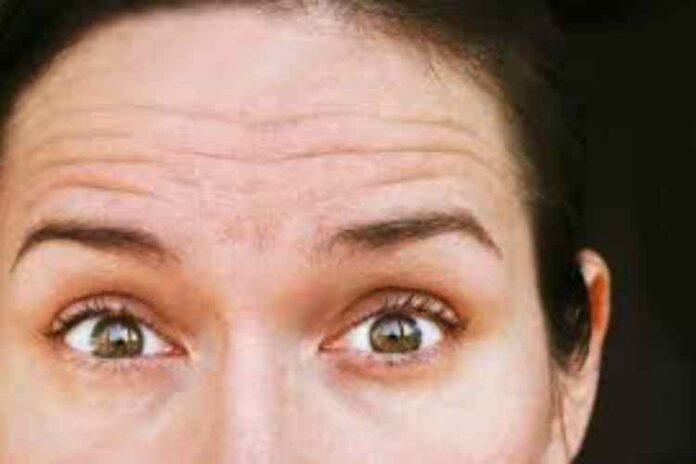Glabellar lines, commonly known as frown lines or “11” lines, are the vertical creases that appear between the eyebrows. These lines are a natural part of the aging process, but they can be a source of concern for many individuals. Fortunately, there are various approaches to address glabellar lines and maintain youthful-looking skin. One key player in achieving skin vitality is collagen—a protein that plays a vital role in skin structure and appearance. This article will delve into the causes of glabellar lines, explore the importance of collagen for skin health, and highlight effective strategies to combat these unwanted lines.
Understanding Glabellar Lines
Glabellar lines typically develop as a result of repeated facial expressions, such as frowning, squinting, or concentrating. Over time, the continuous contraction of the underlying muscles causes the skin to fold, leading to the formation of permanent lines. Factors like sun exposure, genetics, smoking, and age-related changes in skin elasticity contribute to the severity of glabellar lines.
glabellar lines are caused by the contraction of the muscles responsible for facial expressions, particularly the corrugator supercilii and procerus muscles. These muscles are involved in frowning and pulling the eyebrows together, which creates the characteristic vertical lines. Over time, the repeated contraction of these muscles leads to the formation of permanent lines.
In addition to facial muscle activity, other factors contribute to the development of glabellar lines. The natural aging process causes a decrease in the production of collagen and elastin, proteins that provide structural support and elasticity to the skin. As a result, the skin becomes less firm and more prone to wrinkling. Sun exposure, smoking, and poor skin care habits can also accelerate the aging process and contribute to the formation of glabellar lines.
The Significance of Collagen in Skin Health
Collagen is the most abundant protein in our bodies and serves as a building block for various tissues, including the skin. It provides strength, structure, and elasticity to the skin, promoting a youthful and plump appearance. Unfortunately, as we age, collagen production gradually decreases, leading to the formation of wrinkles, including glabellar lines.
To maintain optimal collagen levels and healthy skin, it’s essential to adopt lifestyle habits that support collagen production. This includes a nutritious diet rich in vitamins, minerals, and antioxidants, as well as proper hydration. Additionally, protecting the skin from harmful UV radiation through sunscreen and minimizing exposure to environmental pollutants can help preserve collagen integrity.
Benefits of using collagen
One of the main benefits of using collagen for the skin is its ability to stimulate collagen synthesis. When collagen is applied topically or ingested as a supplement, it can penetrate the skin’s surface and stimulate the production of new collagen fibers. This can help to improve skin elasticity, reduce wrinkles, and promote a more youthful appearance. Additionally, collagen can also help to protect existing collagen from degradation caused by environmental factors such as sun exposure and pollution.
There are several different types of collagen for skin, but the most common types found in skincare products are type I and type III collagen. Type I collagen is the most abundant type in the skin and is responsible for its strength and elasticity. Type III collagen, on the other hand, is often found alongside type I collagen and helps to support the structure of the skin.
Strategies to Combat Glabellar Lines:
Topical Treatments:
Retinoids: Retinol and prescription-strength retinoids stimulate collagen production, improving skin texture and reducing fine lines.
Peptides: Certain peptides can stimulate collagen synthesis and aid in minimizing glabellar lines when included in skincare products.
Hyaluronic Acid: Hyaluronic acid-based dermal fillers can temporarily plump the skin, reducing the appearance of glabellar lines.
Minimally Invasive Procedures:
Botulinum Toxin Injections: Commonly referred to as Botox, these injections relax the muscles responsible for glabellar lines, resulting in a smoother appearance.
Dermal Fillers: Injectable fillers like hyaluronic acid or collagen can be used to fill in deep glabellar lines, restoring volume and reducing their visibility.
Collagen-Boosting Approaches:
Microneedling: This procedure involves using tiny needles to create controlled micro-injuries in the skin, stimulating collagen production and reducing glabellar lines.
Laser Therapy: Certain laser treatments promote collagen synthesis and help diminish glabellar lines, improving overall skin texture.
Conclusion
Glabellar lines can be a distressing sign of aging, but with the right knowledge and approaches, it’s possible to address and reduce their appearance. Understanding the role of collagen in skin health is crucial, as collagen depletion contributes to the formation of glabellar lines. By adopting a holistic approach that includes lifestyle modifications, topical treatments, and minimally invasive procedures, individuals can rejuvenate their skin and restore a more youthful look. Remember, consulting with a qualified dermatologist or skincare professional is essential to determine the most suitable approach for your specific needs.


